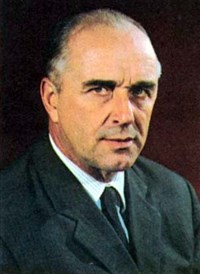Related Research Articles

The Big Sky Conference is a collegiate athletic conference affiliated with the NCAA's Division I with football competing in the Football Championship Subdivision. As of 2023, full member institutions are located in the states of Arizona, California, Colorado, Idaho, Montana, Oregon, Utah, and Washington. Two affiliate members from California are football–only participants.
In sports, a three-peat is winning three consecutive championships or tournaments. The term, a portmanteau of the words three and repeat, originated with the Los Angeles Lakers of the National Basketball Association, during their unsuccessful campaign for a third consecutive championship during the 1988–89 season, having won the previous 2 NBA finals.

The Cornell Big Red is the informal name of the sports and other competitive teams that represent Cornell University in Ithaca, New York. The university sponsors 37 varsity sports, and several intramural and club teams. Cornell participates in NCAA Division I as part of the Ivy League.

The Texas Longhorns are the athletic teams representing the University of Texas at Austin. The teams are sometimes referred to as the Horns and take their name from Longhorn cattle that were an important part of the development of Texas, and are now the official "large animal" of the state of Texas. Generally, both the men's and women's teams are referred to as the Longhorns, and the mascot is a Texas Longhorn steer named Bevo. The Longhorns have consistently been ranked as the biggest brand in collegiate athletics, in both department size and breadth of appeal.
Essex Catholic Boys High School was a four-year Catholic high school located in Newark and East Orange, in Essex County, in the U.S. state of New Jersey. The high school opened in 1957. It was run by the Congregation of Christian Brothers and sponsored by the Roman Catholic Archdiocese of Newark until its closure in 2003.

The Western Michigan Broncos are a National Collegiate Athletic Association (NCAA) Division I program representing Western Michigan University (WMU) in college athletics. They compete in the Mid-American Conference in men's baseball, basketball, football, and tennis; and women's basketball, cross-country, golf, gymnastics, soccer, softball, track and field, and volleyball. The men's ice hockey team competes in the National Collegiate Hockey Conference and the men's soccer team competes in the Missouri Valley Conference. The Broncos also have a flight team, the SkyBroncos, who have won the National Intercollegiate Flying Association (NIFA) National Championship award five times.
Napoleon High School is a public high school in Napoleon, Ohio. It is the only high school in the Napoleon Area City School District. Their nickname is the Wildcats. They are a member of the Northern Lakes League.

North Texas Mean Green represents the University of North Texas (UNT) in intercollegiate athletics. The teams compete in Division I of the National Collegiate Athletic Association (NCAA). North Texas competed in the Sun Belt Conference and Conference USA before joining the American Athletic Conference on July 1, 2023. UNT's official school colors are Green and White. North Texas' mascot is an Eagle named Scrappy.

The San Jose State Spartans are the intercollegiate athletic teams that represent San José State University. SJSU sports teams compete in the Mountain West Conference at the NCAA Division I level, with football competing in the Football Bowl Subdivision (FBS).

Arkady Ivanovich Chernyshev was a Russian ice hockey, football and bandy player, who played in the Soviet Top Hockey League. As a coach, he led Dynamo Moscow and the Soviet Union national ice hockey team. Chernyshev was inducted into the Russian and Soviet Hockey Hall of Fame in 1948, and the IIHF Hall of Fame in 1999.
This is an NCAA Division I men's basketball alignment history. NCAA Division I is the highest level of competition in the National Collegiate Athletic Association, the main governing body for U.S. college sports.
The NCAA University Division was a historic subdivision of the National Collegiate Athletic Association (NCAA) consisting of member schools competing at the highest level of college sports. The University Division was first established as a basis for determining eligibility to participate in the 1957 NCAA University Division basketball tournament. It was replaced in 1973 with the creation of NCAA Division I.

Long Beach State athletics, or simply Beach athletics, are the athletic teams that represent California State University, Long Beach. Teams compete in 19 sports at the National Collegiate Athletic Association (NCAA) Division I level. Long Beach State is a founding member of the Big West Conference, and also competes in the Mountain Pacific Sports Federation and the Golden Coast Conference for sports not sponsored by the Big West.

The Indianapolis Greyhounds, also the UIndy Greyhounds, are the athletic teams that represent the University of Indianapolis (UIndy), located in Indianapolis, Indiana. The Greyhounds compete in NCAA Division II as members of the Great Lakes Valley Conference (GLVC) for all 23 of their varsity sports. Indianapolis has been a member of the GLVC since 1978 and, as of 2022, was the only remaining charter member of the conference.
The Indiana Collegiate Conference (ICC) was a men's college athletic conference in the United States, in existence from 1950 to 1978. It consisted solely of schools in Indiana.
T. S. Muthaiah was a Malayalam and Tamil film actor. He was a popular actor in both film industries who usually played character and supporting roles in 1950s and 1960s.
The Hoosier College Conference (HCC) was a men's intercollegiate athletics conference founded in 1947 by eight members of the Indiana Intercollegiate Conference. After consisting solely of colleges in Indiana for 24 years, the conference changed its name in 1971 to the Hoosier-Buckeye Collegiate Conference (HBCC) to reflect the admission of schools in Ohio. It existed for another 15 years in its rebranded form.
This page details the all-time statistics, records, and other achievements pertaining to the Sacramento Kings.
References
- ↑ "NCAA Group Opens Talks On Money Aid To Players". Kingsport Times. August 20, 1956. p. 7 – via Newspapers.com.
